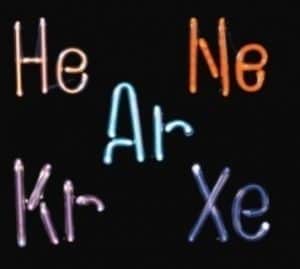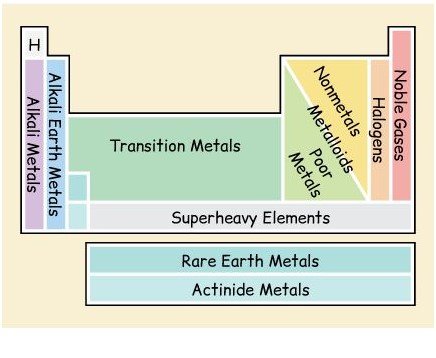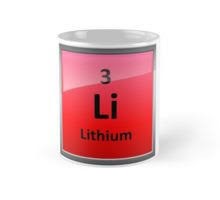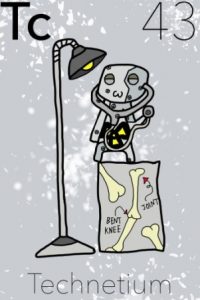Periodic Table
Grade 7 Science Worksheets
How is the periodic table of the elements arranged?
The periodic table is an organized arrangement of the chemical elements, in order of their atomic number (number of protons), electron configurations, and their chemical properties. This ordering segregates elements according to their periodic trends that are elements with similar behavior in the same column.
Schedule a Free session to clear worksheet doubts
No credit card required, no obligation to purchase.
Just schedule a FREE Sessions to meet a tutor and get help on any topic you want!
Naming
All elements are shown by a square on the Periodic Table of Elements and each of them is marked by its own series of letters. Carbon is C, Calcium is Ca, and Hydrogen is H.
The elements are given in increasing order of the atomic number. And every square has the elements’ atomic number and atomic mass.
The atomic number means the number of protons in the nucleus or the electrons orbiting the nucleus. That is number of protons= number of electrons orbiting the nucleus of an atom = atomic number.
The atomic mass is the average mass of the protons, electrons and neutrons in a single atom.
An atom of carbon with protons and neutrons (nucleus) in the centre and electrons orbiting.
Parts of the Table
What is meant by a group and a period in the periodic table?
Groups
Groups are the vertical column and represent element families. There are 18 groups of the elements. They have similar chemical and physical properties.
For example, Group 18 has the noble gases – Helium, Neon, Argon, Radon, Krypton and Xenon which have low melting and boiling points, and they each are colorless, odorless, tasteless, and nonflammable. The group is called as low chemical reactive group.

Periods
Periods are the horizontal rows on the periodic chart. Every element in a period has the same number of electron orbits. 7 is the maximum no. of orbits which an element has according to the discovered elements by the scientists.
The periodic chart has 7 periods. Elements like Hydrogen and Helium are in Period 1- which means they have one orbit of the electron. Elements such as Sodium and Magnesium, Aluminum, are in Period 3- meaning they have three electron orbits.
Other Useful Aspects

Colors
A color scheme has been added to the periodic chart to help understand which elements belong to named categories. Charts vary, but most link elements in these categories Alkali metals, Alkaline earth metals, Transitional, Metals, Metalloids, Halogens Other nonmetals, and Noble Gases.
Some interesting glance at the periodic table
- It is called the periodic table because the rows are called periods.
- There are a total of 118 elements in the periodic table. 90 elements are found in nature, and others are man-made.
- The International Union of Pure Applied Chemistry (IUPAC) is takes care of the periodic table.
- The only metal which is so soft that it can be to cut with a knife and light enough to float on water is Lithium.
- The lightest element is Hydrogen its atomic weight is 1 and that is why it is found in the top left corner of the periodic table.
- The atomic weight of Uranium is 238 being the heaviest element.
- The Noble Gases Helium, neon, argon, krypton, xenon, and radon are unreactive.
- The first man-made element is Technetium. Its basic uses are to locate bone cancers in x-rays.
- 75% of the elements on the periodic table are metals.
- Periodic table of Mendeleev is in the ascending as order of atomic weight and the modern periodic table is according to increasing atomic number.
- Mercury and bromine are only two elements that are liquid in room temperature.
- Dmitry Mendeleev was supposedly late in submitting his work on 63 elements. So in order to finish it quickly he constructed a table of all the elements according to their atomic weights to understand the elements better and to complete his work easily. He was the one who made periodic table.


Learn more about Periodic Table and other important topics with 7th Grade Science Tutoring at eTutorWorld. Our expert science tutors break down the topics through interactive one-to-one sessions. We also offer the advantage of customized lesson plans, flexible schedules and convenience of learning from home.
Personalized Online Tutoring from eTutorWorld
eTutorWorld offers affordable one-on-one live tutoring over the web for Grades K-12, Test Prep help for Standardized tests like SCAT, CogAT, MAP, SSAT, SAT, ACT, ISEE and AP. You may schedule online tutoring lessons at your personal scheduled times, all with a Money-Back Guarantee. The first one-on-one online tutoring lesson is always FREE, no purchase obligation, no credit card required.
For answers/solutions to any question or to learn concepts, take a FREE TRIAL Session.
No credit card required, no obligation to purchase.
Just schedule a FREE Sessions to meet a tutor and get help on any topic you want!
Check Point
A. Fill in the blanks :
- The periodic tableis an organized arrangement of the chemical elements, in order of their ………………….. ……….. (number of protons), electron configurations, and their chemical
- The ……… …………….. represents the number of protons in the nucleus or the electrons orbiting the nucleus.
- The…………… ………..… is the average mass of the protons, electrons and neutrons in a single atom.
- …………… are noted by the vertical column and represent families of elements.
- Periods are noted by the …………………. rows on the periodic chart.
B. State True or False
- Each compound is represented by a square on the Periodic Table and each is denoted by its own unique series of letters.
- Groups are the horizontal rows and represent families of elements.
- While groups and periods are useful in understanding the chemical families, elements are also seen as being organized by blocks.
- The noble gases have low melting and boiling points.
- Over time a color scheme has been added to the periodic chart to help understand which elements belong to named categories.
Answer Key
A. Fill in the blanks –
- Atomic number
- Atomic number
- Atomic mass
- Groups
- Horizontal
B. State True or False –
- False
- False
- True
- True
- True
Learn more about Scientific Method and other important topics with 7th Grade Science Tutoring at eTutorWorld. Our expert science tutors break down the topics through interactive one-to-one sessions. We also offer the advantage of customized lesson plans, flexible schedules and convenience of learning from home.
Pricing for Online Tutoring
| Tutoring Package | Validity | Grade (1-12), College |
|---|---|---|
| 5 sessions | 1 Month | $124 |
| 1 session | 1 Month | $25 |
| 10 sessions | 3 months | $239 |
| 15 sessions | 3 months | $354 |
| 20 sessions | 4 months | $449 |
| 50 sessions | 6 months | $1049 |
| 100 sessions | 12 months | $2049 |
6th Grade Free Worksheets
- Elements & Compounds
- Solar Energy
- Photosynthesis
- Digestive System
- Electricity and Magnetism
- Law of conservation of energy
- Law of Conservation of Mass
- Periodic table
- Properties of Matter
- Waves
- Energy Resources
- Weather and Climate
- Immune, Circulatory and Digestive Systems
- Organs in Multi-cellular Organisms
- Sedimentary, Igneous, and Metamorphic Rocks
- Structure of the Earth
- Physical and Chemical Changes
- Scientific Method
- Cycles in Nature
- Environmental Science
- Renewable and Non-renewable energy Resources
- Characteristics of Living Organisms
- Life Science
- Earth and Space Science
- Solar Eclipse
- Heat Technology
- Newton’s Laws of Motions
- Physical Science
- Tools, Measurement and SI Units
- Earth Atmosphere
- Interactions of Living things
- The Earth Ecosystem
- Organelles in Plant and Animal cells
- Layers of the Earth


